Charging in the City
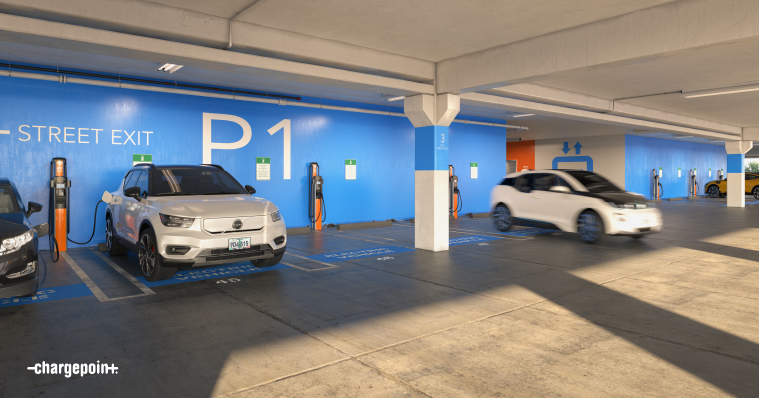
My Personal Charging Experiences: Why City EV Charging Matters
Being an “early adopter” for EVs has been great. I say “early adopter”, because I only recently purchased my Hyundai IONIQ 5 in late 2024. While it is surely not the early days of EV adoption anymore, things still feel quite fresh both for consumers and the infrastructure that supports EVs. I’m blessed to be able to charge my car at home with a basic 120V outlet, getting 50 miles overnight for my roughly 14 mile commute to work and back. This has made EV ownership quite seamless for my daily lifestyle and removes the task of actively fueling up my car throughout the month. I just plug in for a few nights once I get to about 30% or 40% SoC and just trickle charge up to 80% or 90% over the week.
This home charging experience has made it easy to go electric for me, but I’ve experienced first hand some of the difficulties of owning an EV in more urban environments or when the convenience of charging overnight isn’t available while travelling. I regularly travel up to Atlanta for the weekend, staying at a friends house while I’m there. While I could bring my personal Level 1/2 charger with me to my friend’s house, there were a couple reasons why I didn’t:
- I didn’t want to unnecessarily add to their electric bill
- I’d likely only get access to Lvl 1 charging which wouldn’t realistically cover the amount of driving I’d do in the area
- My vehicle came with free DC Fast charging at Electrify America stations and there’s one nearby my friend’s place!
So you’d think charging would be completly hassle free. I had a plan and I could execute it easily . . . not quite. Most of the times my trips up to Atlanta are uneventful. I stop by the Electrify America station for a free top up the day before heading back home and I’m good to go. On a few occasions though this station was at full capacity, which isn’t surprising since there were only 4 stalls or plugs available. This meant I had to wait in line, sometimes to find out that a couple of the stations were out of service. This meant I’d had to come back another time during the day or come back early in the morning before leaving. Not super convenient.
On other occasions, I may be driving a great deal around the city and would appreciate a bit of charge while I’m out. Many times I’d get lucky and the places I visit have public Level 2 charging in the parking garage. Most of the time this works out with the only challenging thing being finding the two or three plugs in the maze of a parking garage and hoping one was available for use. I learned the hard way though, just because the chargers were available did not mean they were in service. Since EV charging is such a new thing for business owners or parking garage owners, maitenance of EV chargers isn’t a high priority, let alone number of chargers. On a few rare occasions I’ve come across some old hardware that were begging to be replaced, but no notice is placed stating the the charger is inoperable. That was unfortunate for me who walked away from my car with the cord only loosely connected to my vehicle, falsely assuming I’d receive a charge when I get back.
Further still, I’ve faced frustration when failing to initiate a charge at an unfamiliar charging unit, moving from plug to plug only to find out I had installed a deprecated version of an app and had to install a different one to start a charge properly. Luckily in that scenario I was waiting for friends and family to show up for a dinner and I could even help a family member charge their new EV without my same hassles, but that was a waste of 15 minutes outside rushing to park at a new station before someone else took the spot (again, too few chargers in these early adoption stages). Needless to say, I’ll be using apps like PlugShare far more often to know about site reliability and report my charging sessions when I’m out and about in the city or just on the road.
So How Can We Improve City EV Charging?
So what insights did I gain from my varying levels of success charging publicly in the city? Well there are certaintly at least 3 improvements that should be made within the next few years for charging publicly:
1. Increase the number of chargers in parking lots and garages
The U.S. Department of Energy cited in 2024 there were 168,000+ EV Charging Ports across the nation. The U.S. government set a goal of installing 500k public chargers by 2030, while a McKinsey report projects we’ll need twice that ammount leaving us barely 1/5th of the way there in 2025. The report also notes that solving the equittable distribution of EV charging infrastructure is a significant hurdle towards EV adoption as most public charging is installed where it would be profittable in wealthier cities. Although Level 2 charging is not as convenient for those on the go, its a necessity to those who wouldn’t have access to home charging due to their location or finances.
2. Higher site reliability and communication of charging service status
The frustration I experienced with non-functioning chargers isn’t unique. The 2024 J.D. Power Electric Vehicle Experience Public Charging Study found that 19% of public charging attempts fail whether due to equipment malfunctions, payment processing issues, or other technical problems. This unreliability significantly impacts consumer confidence in EV adoption. They found 61% of failed visits were due to chargers being out of serivce or simply not working. Increasing overall equipment uptime and making it easier to know when a charger is or isn’t available before you show up to it would help improve reliability.
3. Make charging either an app free exprience or an app agnostic experience
The National Renewable Energy Laboratory (NREL) highlighted in a 2024 article that fragmentation among charging apps and payment systems can make charging experiences unpredictable. While charging stations offer flexibility in payment methods (RFID, NFC, credit card, Plug & Charge, etc.), these methods are only helpful when they work reliably. It doesn’t help that the average EV driver has 3-4 different charging apps on their phone, creating a frustrating user experience. Standardizing this experience with either Plug and Charge technology, a reliable payment terminal, or an app agnostic experience would greatly increase the ease of learning any chargepoint location.
Envisioning the Norm of EV Charging
While this is by no means an exhaustive list of needed improvements to the public city charging problemspace, I believe addressing these issues are achievable milestones for city planners and business owners to strive towards next. While I could have included more DC fast charging as a needed improvement, this solution requires a great deal of capital making it less cost effective and thus less scalable in the short term. While DC fast charging does increase the confidence of EV owners that they can get a quick charge in a similar routine to their old gas car, I’m betting it will not be the most common driving behavior in the future. EV charging needs to be more ubiquitous. Found in all the places we shop, work, and play, to steal a slogan from the mixed-used property handbook.
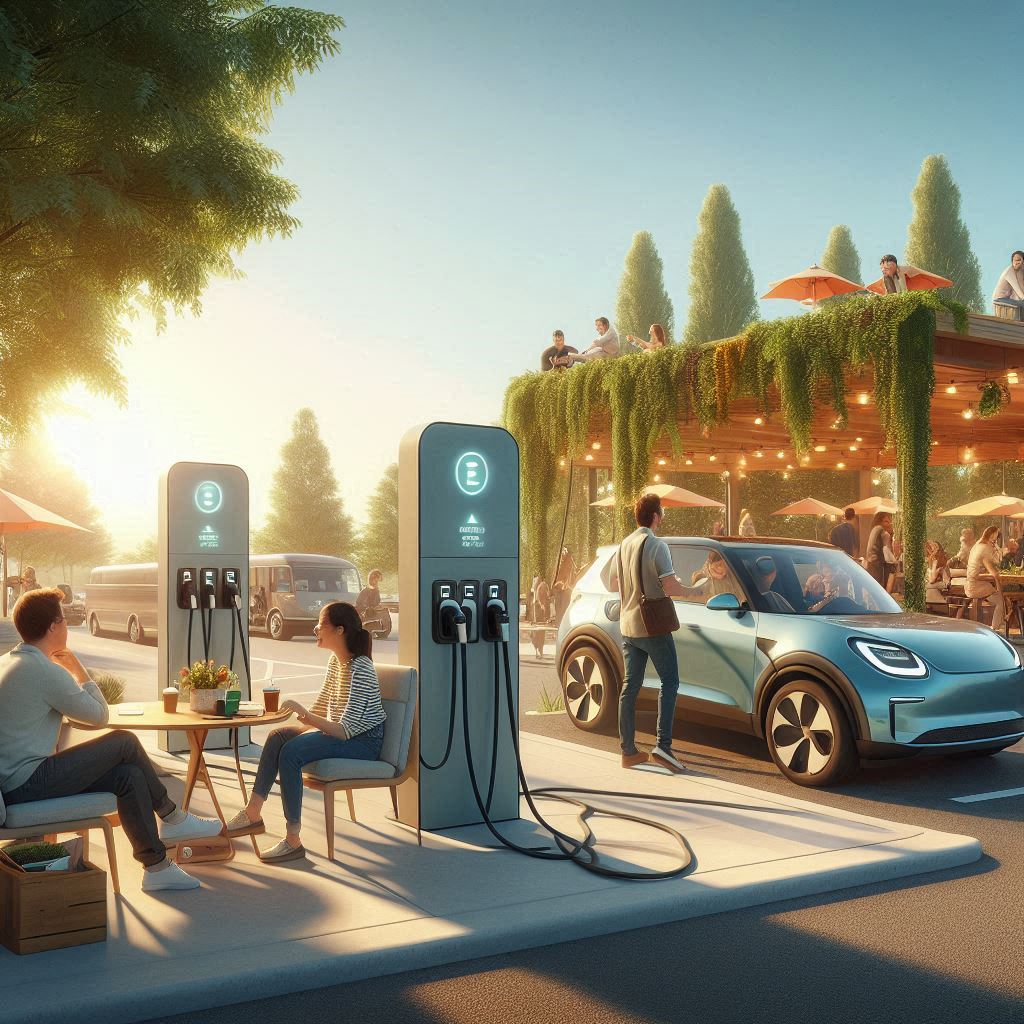
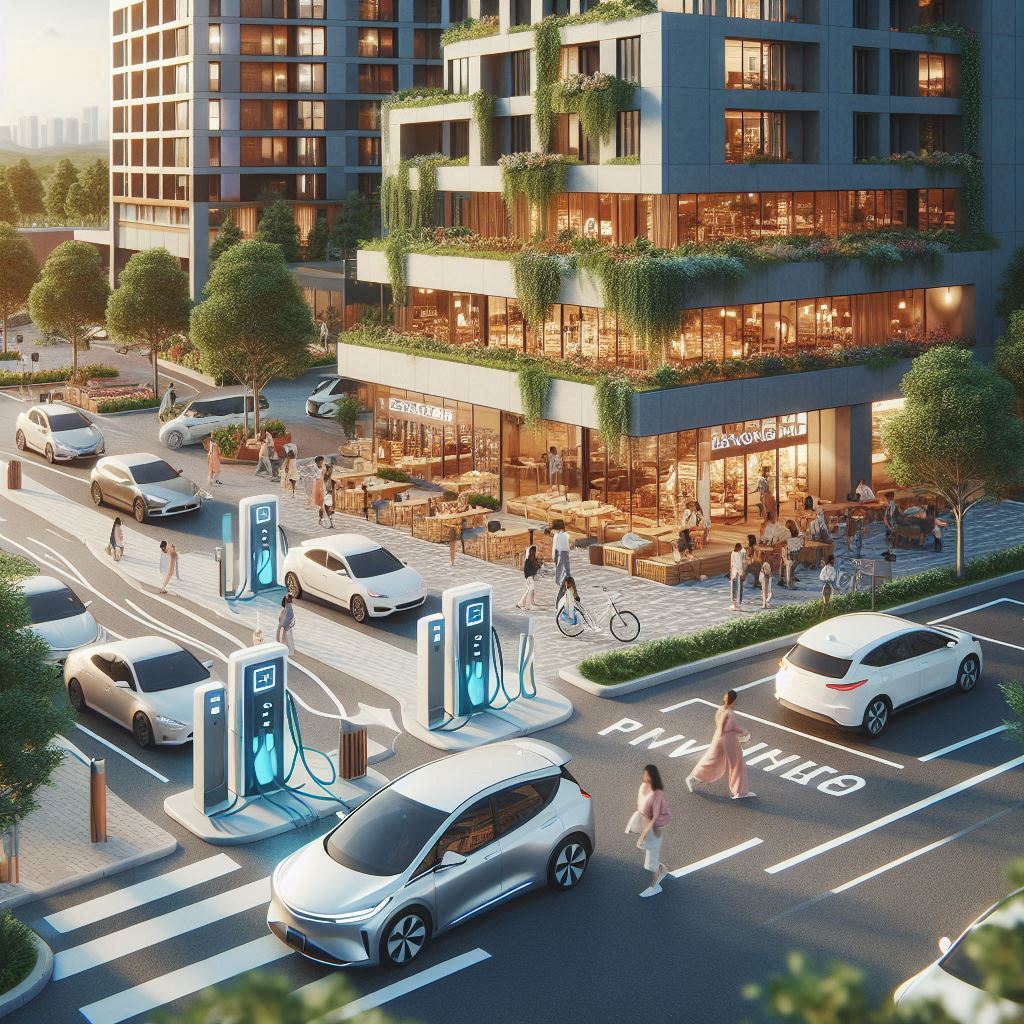
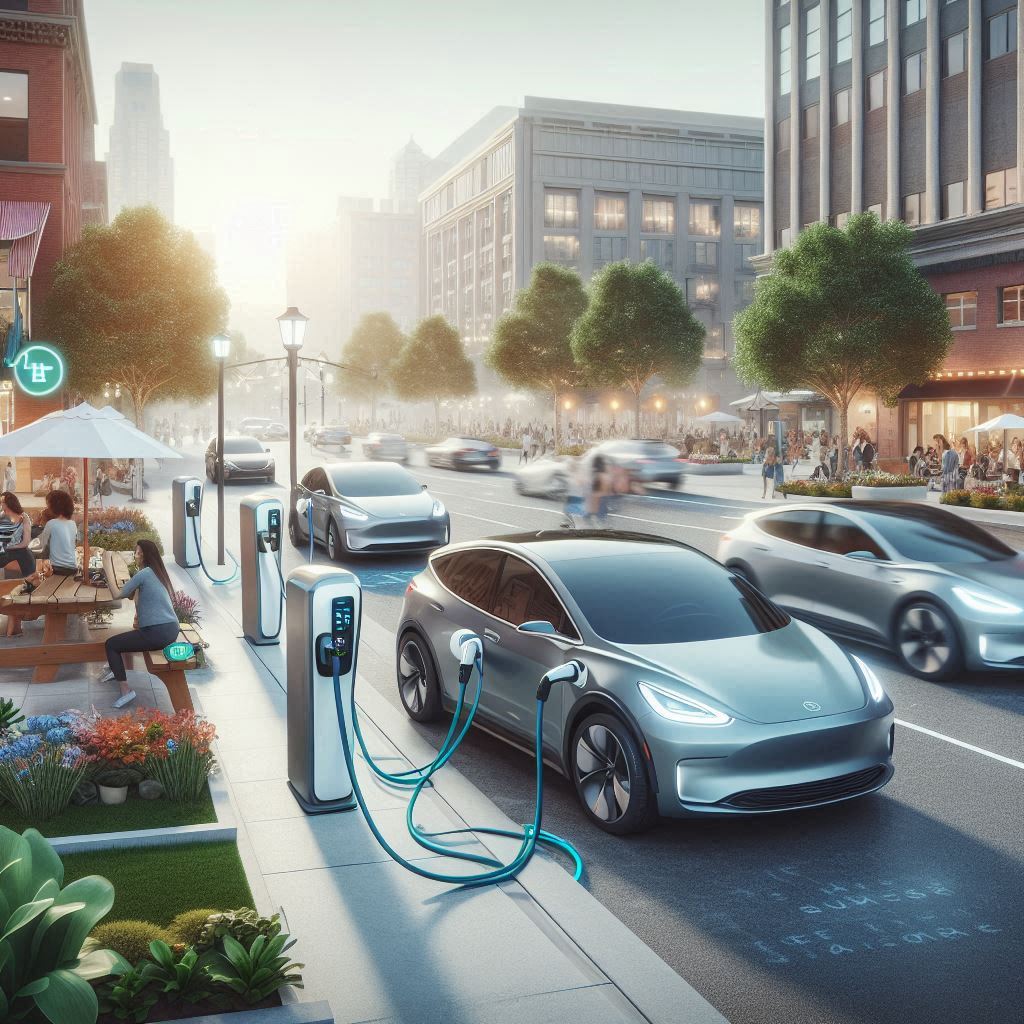
Charging your EV on any average day should look more passive. Charging while at the gym, the park, or going to get lunch with friends. Almost like a public utility that has integrated with the city fabric. Ensuring these stations are always up and running, or at least clearly marked as unavailable, will be a must to reduce any unnecessary frustration that would make owning an EV less convenient. A nearly universal way to initiate a charge is also helpful towards this end. Having the flexibility of using something that looks like a charger you’re familiar with, without fiddling with a new app or wondering how to process payment, makes the experience more accessible by reducing cognitive load for EV drivers. Communication standards like OCPP and OCPI help keep the charging experience standard no matter the vehicle or charging network used. All of these features combine to make the task of charging your vehicle 99% invisible as is said in the design world. When charging your car doesn’t really feel like you’re doing anything at all, I think we can safely say we are out of the early adopter stage.
Who this Matters To
Before closing out on this city charging adventure, I wanted to reflect on why charging in the city matters so much for EV adoption. Particularly, who it will matter to. Here are the prime users I think of:
- Renters (apartment and single-family home)
- Tourists/Visitors
- Commuters
I think of these people as the ones who would be the least likely to own an EV today simply because the infrastructure isn’t set in place for them to reliably charge their lifestyle. Renters, both in apartments or single-family homes, may have less autonomy to get a decent Level 2 charging station installed where they park. Either because the landlord won’t approve of it or the logistics of it haven’t been talked about and it may not seem to be a worthy investment as of yet to the landlord. Tourists to a city, while they could easily find a nearby DC fast charging station within the city, its active time being used to charge the car when they could be enjoying their desired destination while their vehicle passively charges instead. Businesses and cities could increase revenue by providing Level 2 charging as a perk for visiting their establishments. In the future, I expect visitors to be confused if they don’t see charging in a parking lot because they are so used to it being everywhere they go. The same could be said of workplaces for commuters. Some people drive in excess of 30 miles to get to work one way, and if you happen to be a part of the previous two groups, you may not have charging when you get home. That’s at least 60 miles of range depleted a day, which at best would get you 5 days of driving (300 miles) granted you had no errands to run during the week. Providing EV charging at the work place helps reduce some barriers of reliably getting to work without any range anxiety.
Available Solutions Today
More reliable and user friendly charging everywhere ultimately leads to a better driving experience for everyone. Whether you charge at home or not, EV drivers would have one less thing to worry about when adventuring to new places, grabbing coffee with friends, or performing their daily commutes.
We can look to the work being done by it’s electric, a curbside charging company out of New York with a mission to increase EV adoption by turning buildings into useable energy – “Cars. Powered by Buildings.”. Curbside charging is a bring your own cable (BYOC) model that has been growing steadily in Europe and is something that makes sense in places like Brooklyn, Boston and LA where it’s electric has installed their Level 2 units.
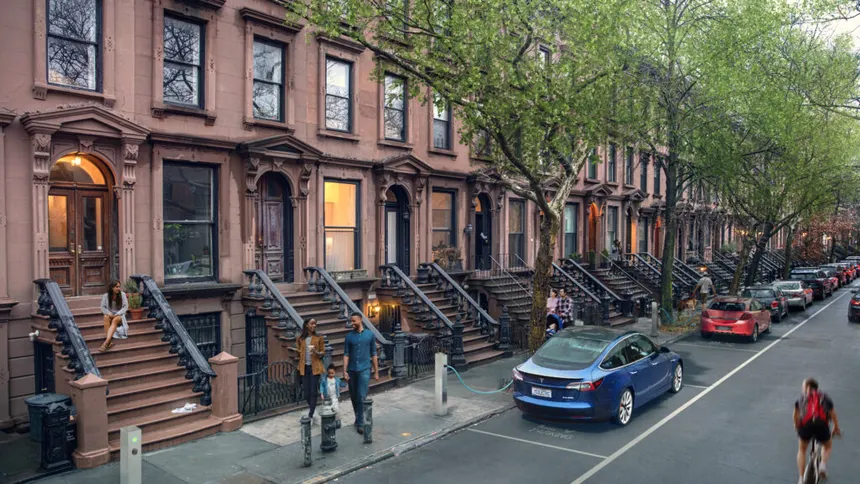

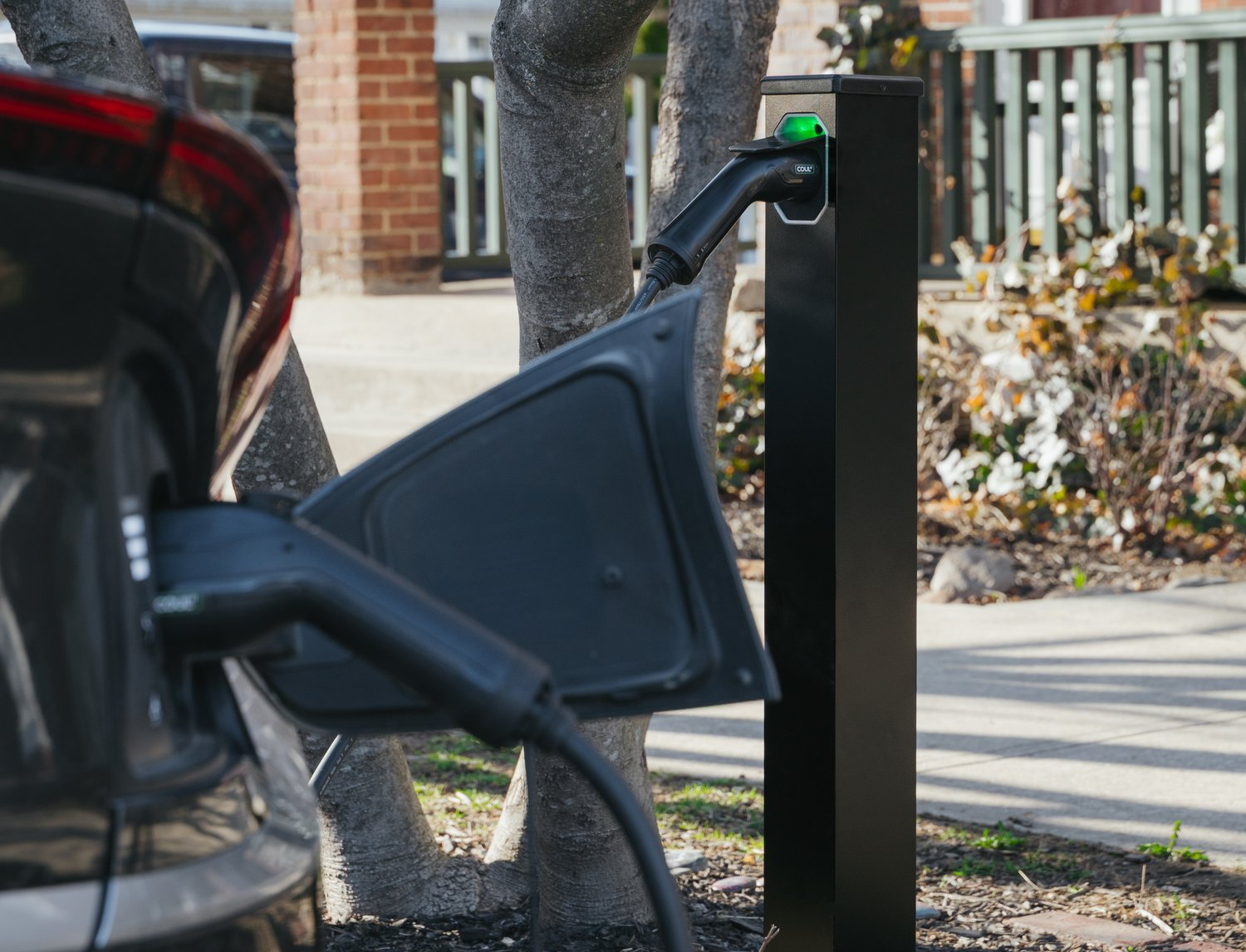
A similar company Coul Street aims to solve this problem in more suburban like citis that also lack garages to easily install LVL 2 charging. This would be great for cities like Atlanta that have a mix of single-family homes located within the city that use street side parking.
Looking Forward
As Electric Vehicle adoption increases over time, more and more solutions will come to the market to meet the needs of public charging within the city. Soluitons like wireless charging which would make fueling up as simple as parking and agreeing to initiate a charge exists today but require further adoption from automotive manufacturers and additional proofs of concept. Its being explored as a great option for fleet operations that stick to regular routes like rideshare services, buses, and delivery fleets. “Battery swapping” is another existing solution that could be great for those who are cool with the idea of a battery subscription service rather than owning it outright.
Considering ways to improve mobility in general should be considered as well. Reducing our overall dependency on cars and embracing public transit in the form of street cars (trams), metros, and high speed rail would give people the option to navigate their city without dealing with the expenses that come with a car. Better city design that encourages walking and biking is of great need as well. While the push for public transit and better designed cities in the U.S. has been a difficult one due to a large backdrop of NIMByism and political pushback fueled by injustice, it is something I hear in conversation with friends and strangers more and more often, espicially with those who navigate I-75 in Atlanta during rush hour, which is every hour in Atlanta. I push for EV adoption in particular because I know imrpoving our cities in the way previously described is a difficult ask right now in America. I do have hope it will improve though as projects like The Atlanta Beltline give us a taste of how amazing pedestrian transit cooridors can be. To get the ball rolling though towards making transit more sustainable, making charging ubiquitous and simple should be the goal for cities today.
Venturing Further
If you’re looking to further explore the space of charging in the city, check out some of these resources I’ve enjoyed while considering this problem.
Charging Solutions
- ItsElectric – Cars. Powered by Buildings.
- Coul St – EV Charging for the Gargeless
- WiTricity – Wireless Charging
Public Charging
- Exploring Consumer Sentiment on Electric-Vehicle Charging
- J.D. Power Electric Vehicle Studies
- Charging Forward: A Toolkit for Planning and Funding Rural Electric Mobility Infrastructure
- An EV in Every Garage
- EV Chargers: Why and how your community should install them
Towards Better Cities
- City on The Verge by Mark Pendergrast – For Understanding the hope and struggle to build better cities and transit – Book
- Public Transit in the Suburbs – How did Helsinki make transit work in the suburbs? – Navigating Urban Transit with George Liu – YouTube
- The Future of Cities Starts with Transportation Equity – YouTube
- BeltLine in Atlanta: A Short History and Overview – YouTube
- Building the Electric-Vehicle Charging Infrastructure America Needs
Enjoy Reading This Article?
Here are some more articles you might like to read next: